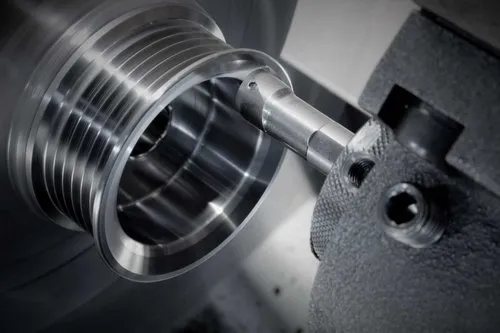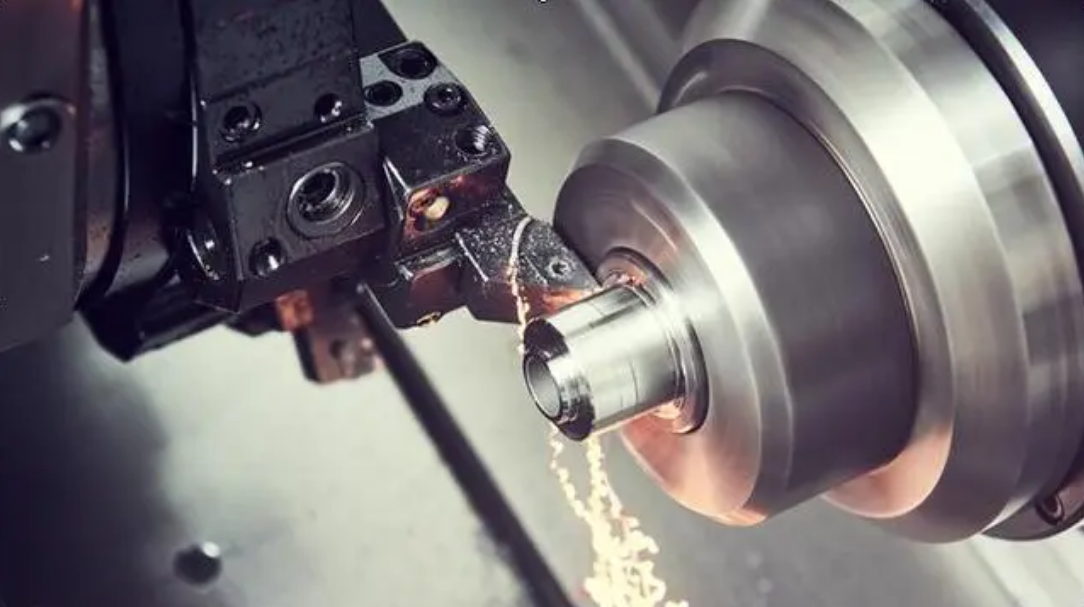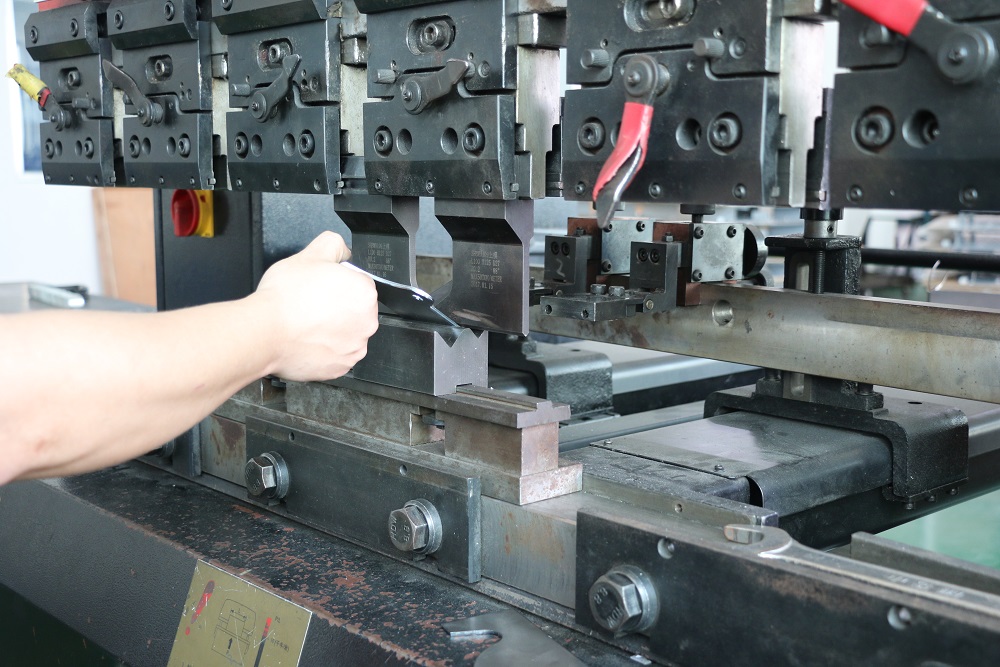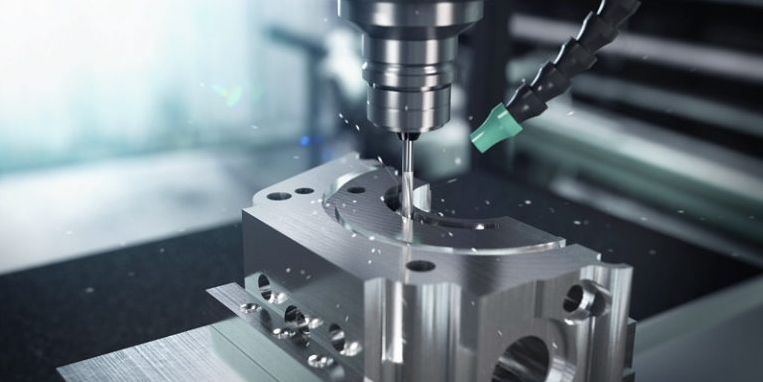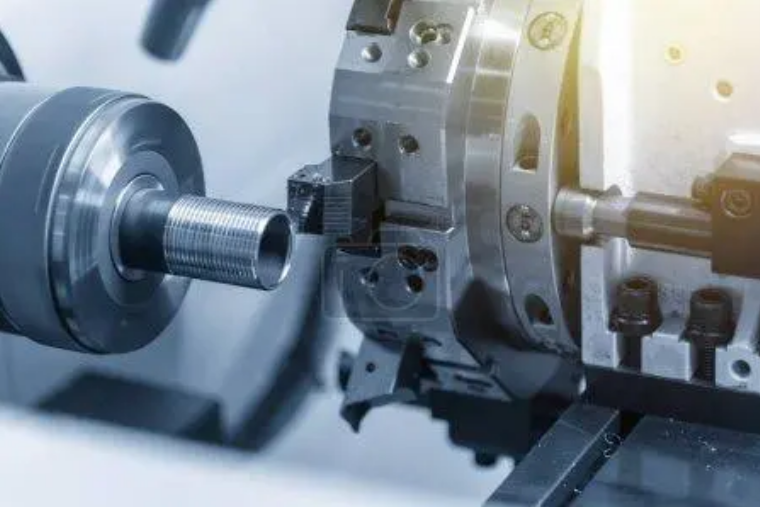CNC machining removes material to create parts with high precision, while die casting injects molten metal into molds for rapid, high-volume production.
Introduction to Manufacturing Processes
The manufacturing process includes various activities; one such is a method of turning raw materials into finished products, and each offers unique advantages and disadvantages. The two core methods are CNC machining and die casting, both of which are used widely in several industries. These two methods differ primarily in terms of precision, speed, material, and cost.
Defining CNC Machining
CNC is a process that permits the use of computer-controlled tools to subtract material from a workpiece. This approach offers high precision and is used in a range of industries, such as aerospace, automotive, and medical devices. Some examples of CNC machines are lathes, mills, routers, and they are all able to cut a variety of materials, including metals, such as aluminum, steel, and plastics. CNC is used primarily to create custom-made or small series of products, as it is highly flexible.
Steps KDE Process Resection Tour:
-
CAD Model Design: The process starts with a digital 3D model, designed through CAD software.
-
G-code Generation: Once the cad model is ready, it is converted into G-code. The latter is the specific “language” for machines, and it gives the CNC step by step instructions.
-
Machine Set-Up: The CNC machine is inserted into the workpiece, and the CNC machine is set up.
-
Perform Machining Operation: Finally, the CNC machine will machine the workpiece by cutting, drilling, or milling, in accordance with the G-code.
-
Quality Check and Finishing: The last step is the inspection of the possibility of finishing by painting, polishing, or any other process.
Defining Die Casting
Die casting is a process that involves in which molten metal is forced into a mold cavity under extreme pressure. This will enable the production of high quantities of parts, in culminated-shaped as well as with uppers surfaces and precise dimensions. The common industry that uses die-casting techniques is the automotive-electronics-consumer goods industry.
Steps in Die Casting:
-
Create the mold : The mold is designed according to the desired part, the mold is usually made of steel or iron
-
Prepare the molten metal : The metal is placed in a furnace and heated until it is liquid
-
Inject the molten metal into the mold : The high pressure ensures that metal is injected into every nook and cranny of the mold
-
Allow the metal to solidify : The metal cools and solidifies very quickly
-
Remove the casting and finish
What are the key differences between CNC machining and Die Casting?
Although both methods produce high-quality products, CNC machining and die casting are appropriate for different types of production. CNC machining is more fit for lower-volume productions, whereas die casting, with its higher speeds and flexibility, is more appropriate for higher-volume productions . The main material processed using die-casting is metal; meanwhile, CNC machines can work with several different materials. The greatest disadvantage of die-casting is the fact that if a production line falls, the losses are severe.
Some of the main differences between the two processes are:
-
Material properties : generally, CNC machining can work with a wider range of materials than die casting
-
Production speed : die casting is significantly faster and more flexible in the production of large runs of products
-
Unit costs : die casting eventually becomes more cost-efficient as production volume increases; CNC machining is always more expensive .
Defining CNC Machining
The abbreviation CNC stands for Computer Numerical Control. CNC machining is a manufacturing process during which pre-programmed software specifies the movement of machinery and the deployment of tools to manufacture the part or product. Such an approach is beneficial for manufacturing as it makes the whole process more precise and allows creating handicraft products or complex parts with high tolerance. The following paper will discuss how CNC machining works, the types of CNC machines, their applications, and the way they differ from other mechanisms or devices.
First of all, to work correctly, CNC machines require creating the digital blueprint that is known as a CAD or Computer Aided Design drawing. It is a 3D model of the piece that will be subsequently converted into G-code. The last one is a programing language for CNC machining and provides details on speeds, rapid speeds, feeds, toolpaths, and the tool which will be probably used. The first step in the process is to create a CAD model, then the machine toolpath and the G-code are being prepared, and the workpiece is being attached to the CNC machine or a bed. The cutting tools are then replaced, and the operation begins. Evidently, the whole process of CNC machining is automatized, and it is finished when after creating the part, they are cut off for examination and storing. It is also important to remember that CNC machines can work with a variety of materials such as metal alloys, plastics, and even wood or foam.
A significant part of CNC machining is the type of CNC machine as the area of its application mainly depends on it. For example, CNC mills are able to cut the material in many different directions making them versatile for a different-shaped product. By contrast, CNC lathes are used for cylindrical parts. Overall, some common types of CNC machines include CNC mills, lathes, plasma cutters, and routers. CNC mills can be specified as the most common machines. They cut material on three axes, in five-sided machining, or with simultaneous enrichment. In their turn, lathes rotate a product along one or more of their axes to shape them. The plasma cutter operates with materials to melt them, and routers are used mostly for cutting target materials on a greater scale.
In conclusion, CNC machining is an approach to crafting and manufacturing types of equipment that cut raw material in the specified parts. In general, it is automatized, and the main process depends on the instructions indicated in the G-code. The other part of development is the type of CNC machine that can vary in accordance with the type of part. That is why in generally, it is found by mathematician Alandro Zerman and is called CNC Machines Basics. In fact, this type of automatization allows workers to craft even the simplest products that will be the relevant replicas after being cut.

Understanding Die Casting
Die casting is a high-speed, high-pressure manufacturing process that is used to create complex metal parts. This method of production is highly efficient and results in high surface finishes and is one of the preferred methods for mass production. When we cast die cast, which is the manufacture of parts from metals or alloys using metallic masters, one potential use would be to make a variety of finely detailed jewelry or collectibles . Since die cast takes place in the form of a mold that forms the shape, width, and height of the part, this technique is employed at scale to give greater precision. To give the metal a definite shape, it is heated and then thrust into the tape, and every detail of the mold formed is very careful; the metal does not fill cavities as it solidifies.
Here is a description of the process die cast typically occurs in:
-
Mold design: It starts with a steel or iron mold of the required shape. However, they are heated and cooled without suffering any damage due to high temperatures. It is also possible to operate in high-pressure and high-temperature environments.
-
Prepare hot metal: To make the parts, die castings often make use of aluminum, magnesium, or zinc. The right metal is then heated to a high temperature where it will liquefy.
-
Metal Injection: It is injected at a high pressure of 1500 to 30,000 pounds per square inch to fill all blanks, cavities, and crevices of the mold.
-
Metal Solidification: The part is then cooled and allowed to solidify because it cools and solidifies in just 5 to 10 seconds to 2 to 3 minutes for a large and thick ball.
-
Parts: The mold is removed during press release, and the part is, therefore, to be discarded. A part may be trimmed, deburred, or require other finishing touches.
Two types of die casting:
Hot chamber die casting: suitable for metals with low melting points, such as zinc and magnesium. The melting pot is built into the casting machine, which speeds up production. Cold chamber die casting: suitable for higher melting point metals, such as aluminum and brass. Before the injection, the molten metal is poured into a separate chamber, reducing the wear and tear of the metal. Die casting applications
The manufacturing process is commonly used in industries requiring large-scale products that can be designed exactly. Some applications are listed below:
Automotive: many products produced in the automotive industry, such as are made through the process of die casting engine blocks, gears, and wheel rims.
Electronics: various types of housing, heat sinks is made of die-casting for electronic and telecommunication devices.
Toys: A large number of metal toys for children, such as cars, trucks, or trains, are produced by die casting. It also enables the production of toy accessories.
Consumer goods: consumers may report to the use die casting to produce everyday items such as faucets, latches, knobs, doorways, lamp posts, or even jewellery. Industrial equipment: other applications of die casting is the production of machinery, gears, screws, not even did plate transport equipment.
The key benefits of the process are efficiency and speed. This type of processing allows for the rapid and cost-effective production of complex parts. Additionally, it has a high degree of flexibility and can be used for a wide range of applications. Regardless of the product that must be produced, die-casting guarantees high quality and can achieve flexibility.
Key Differences Between CNC Machining and Die Casting
CNC machining and die casting are two of the manufacturing processes that are widely used nowadays. However, while they have some similarities when it comes to the methods of work, they have a number of differences as well. CNC machining is applied for the removal of materials, making parts with the help of a wide variety of materials . On the other hand, die casting implies using the instrument to get the necessary part created from the molten metal . Such diverse peculiarities precondition the differences of these processes when it comes to the purpose the serve, the costs, and the results.
Differently Put Purposes
In general, there are several materials that can be used for creating parts with the help of one or another process. CNC machining is frequently applied for working with metals , such as aluminum and steel, but it is also possible to machine plastics and composites. Therefore, one can create titanium parts or stainless steel parts or simply some prototypes. As for die casting, it can be used with such metals as aluminum, zinc, and magnesium . Obviously, such materials are used for high-pressure injection and should provide some solid part . In other words, the primary purpose of CNC machining is the creation of custom parts or some prototypes whereas die casting can be used for manufacturing of bulk components that have high pressure inside and should be durable.
Production Speed and Volume
In addition, die casting is closely related to speed and high-volume production. The mold is created and thousands of the same parts can be produced with the help of die casting during a short period . Such speed is possible only due to the injection of the molten metal under high pressure and cooling . At the same time, CNC machining is rather slow since every part should be machined separately. However, this process is also quite applicable for both medium and high-production volume . That is why it is possible to state that one of the differences between the two processes is related to the time that is required.
Cost
Undoubtedly, the initial investment in terms of money that is required for die casting is much higher since the molds are needed. However, if there is high-volume production, it is rather cost effective since the mold can be preserved, and the cast can be repeated. In other words, there is no doubt that the cost of the die casting per part is lower, and it is frequently used by such industries as the automotive industry and the industry of consumer electronics.
CNC machining, on the other hand, has lower initial costs because it doesn’t require custom molds. This makes it more cost-effective for smaller production runs or custom parts. It’s also easier to make changes during production since there’s no mold to modify—a significant advantage in prototyping or custom manufacturing. Precision and Finish
Both CNC machining and die casting offer precision, but in different ways. The former is known for its high precision, capable of creating complex geometries with tight tolerances—often within 0.001 inches. As such, it is popular in aerospace, medical devices and other industries where accuracy is paramount. The latter provides a smoother surface finish and is excellent for producing complex shapes with impactful uniform shapes. However, die casting might not have the same level of precision as CNC machining, which can create ultra-tight tolerances. As such, the former is more appropriate for parts that don’t require CNC’s high level of precision. Which Process to Choose?
Die casting is a strong process to choose if a project features a single material and requires a high volume. It also a strong option for projects with complex shapes and high surface finish, particularly within the automotive and consumer goods industries. As such, CNC machining is more appropriate for lower to medium production volumes, custom parts and especially those that require high precision. In conclusion, understanding these key differences helps businesses and manufacturers choose the process that meets their needs, ensuring efficiency and cost-effectiveness.

